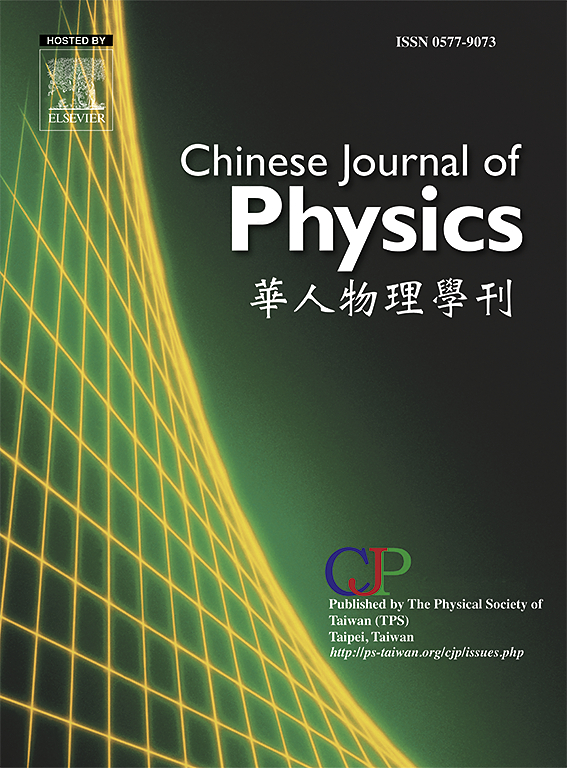Flow diverters as a technique to balance the flow in bifurcation branches in a stenosed coronary artery
IF 4.6
2区 物理与天体物理
Q1 PHYSICS, MULTIDISCIPLINARY
引用次数: 0
Abstract
Owing to the intricate hemodynamic circumstances and local flow disruptions that are prevalent, coronary bifurcations are among the most often damaged sites by atherosclerosis. The present research is intended to discover a novel way to save the coronary branches from undergoing further deterioration due to the existing stenosis along the branches of the bifurcation, to prevent vascular diseases and further complications. Cylindrical elastic biodegradable flow diverters of uniform radius are deployed in the flow channel near the entry of the bifurcation region. Employing finite element methods, fluid dynamics equations and structural equations are solved. Although flow diverters have historically been employed for managing aneurysms by encouraging thrombosis, the current work presents a novel use of flow diverters to reduce the risk of stenosis by balancing hemodynamic asymmetry. It is found that the butterfly effect of flow distribution and sliding flows perfectly balances the flow between the coronary branches. The difference in the total shear force along the walls due to the installed diverters is found to be in the range of . The highest strain experienced by the arterial walls ranges from to as the number of flow diverters is increased. A to elongation or compression of the arterial wall is seen as the diverters were installed. This deformation is very small to impact the arterial tissue, as a stent-induced strain is considered safe if maintained below 10%. The results concluded that the inclusion of flow diverters does not affect the mechanical indicators.

在狭窄的冠状动脉中,分流器作为一种平衡分支血流的技术
由于复杂的血流动力学环境和普遍存在的局部血流中断,冠状动脉分叉是动脉粥样硬化最常损坏的部位之一。本研究旨在发现一种新的方法,使冠状动脉分支不因分支狭窄而进一步恶化,以防止血管疾病和并发症的发生。在分岔区入口附近的流道内布置了半径均匀的圆柱形弹性可生物降解导流器。采用有限元方法,求解了流体力学方程和结构方程。虽然历史上使用分流器通过促进血栓形成来治疗动脉瘤,但目前的工作提出了一种新的使用分流器通过平衡血流动力学不对称性来降低狭窄风险的方法。研究发现,流动分布和滑动流动的蝴蝶效应完美地平衡了冠状动脉分支之间的流动。由于安装了导流器,沿墙产生的总剪力差在10 ~ 1N/m之间。随着分流器数量的增加,动脉壁所经历的最高应变范围为4×10−4 ~ 1×10−3。当安装转流器时,动脉壁有0.04% - 0.3%的伸长或压缩。这种变形对动脉组织的影响很小,因为如果维持在10%以下,支架引起的应变被认为是安全的。结果表明,加入导流剂对力学指标没有影响。
本文章由计算机程序翻译,如有差异,请以英文原文为准。
求助全文
约1分钟内获得全文
求助全文
来源期刊

Chinese Journal of Physics
物理-物理:综合
CiteScore
8.50
自引率
10.00%
发文量
361
审稿时长
44 days
期刊介绍:
The Chinese Journal of Physics publishes important advances in various branches in physics, including statistical and biophysical physics, condensed matter physics, atomic/molecular physics, optics, particle physics and nuclear physics.
The editors welcome manuscripts on:
-General Physics: Statistical and Quantum Mechanics, etc.-
Gravitation and Astrophysics-
Elementary Particles and Fields-
Nuclear Physics-
Atomic, Molecular, and Optical Physics-
Quantum Information and Quantum Computation-
Fluid Dynamics, Nonlinear Dynamics, Chaos, and Complex Networks-
Plasma and Beam Physics-
Condensed Matter: Structure, etc.-
Condensed Matter: Electronic Properties, etc.-
Polymer, Soft Matter, Biological, and Interdisciplinary Physics.
CJP publishes regular research papers, feature articles and review papers.
 求助内容:
求助内容: 应助结果提醒方式:
应助结果提醒方式:


